The HPE DL60 Gen9 is going to be our final Broadwell-DE system review. STH has around 100 reviews around the venerable LGA2011-3 platform. Perhaps that makes the review of the HPE DL60 Gen9 the end of an era. On the other hand, the HPE DL60 Gen9 configuration we have on hand is a highly cost-optimized solution that will still serve users well in the near future as we see platforms like AMD EPYC launch.
HPE ProLiant DL60 Gen9 Test Configuration
Before we start, we want to mention that we have what may be an absolute entry-level configuration for the HPE DL60 Gen9 platform.
- Chassis: 4x 3.5″ LFF 1U HPE DL60 Gen9
- CPU: 1x E5-2603 V3 or 1x E5-2630L V3
- RAM: 1x 4GB DDR4-2133 ECC
- SSD: Intel DC S3700 400GB
- Storage Controller: HPE SmartArray B140i
- OS: Ubuntu 16.04.2 LTS, Ubuntu 14.04.5 LTS, CentOS 7.3, Windows Server 2016
This is actually the lowest-end configuration we have tested in the LGA2011-3 generations spanning the Intel Xeon E5-2600 V3 and E5-2600 V4 processor generations.
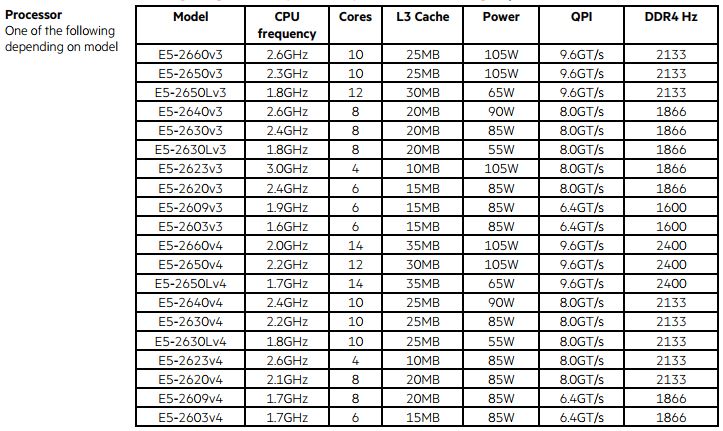
(Source: HPE ProLiant DL60 Gen9 Quick Specs)
One key to the HPE DL60 Gen9 is that the system has relatively tight CPU TDP guidelines. It supports up to 105W TDP Intel Xeon E5 V3/ V4 CPUs.
HPE ProLiant DL60 Gen9 Overview
The HPE DL60 Gen9 is a cost optimized 1U server. There are four front 3.5″ bays adorning the chassis. You will not find higher-end features such as hot-swap NVMe SSDs on this platform.
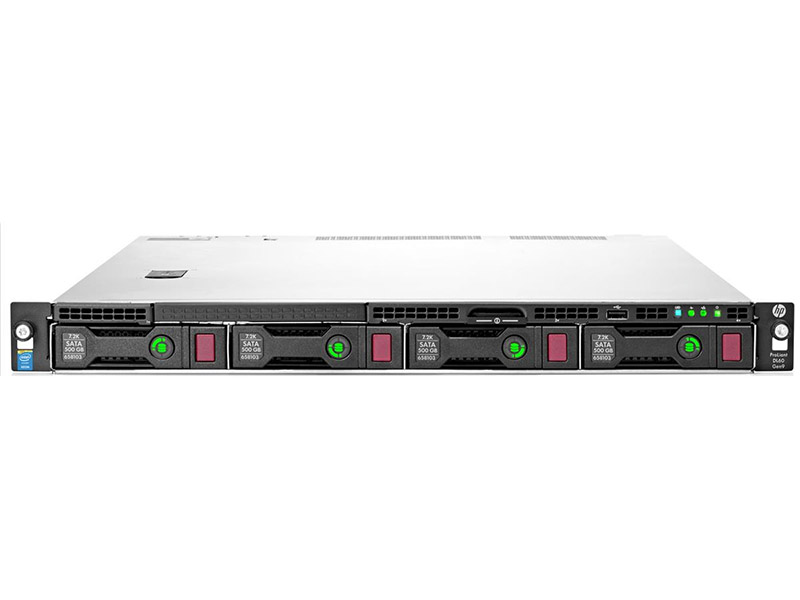
Inside the chassis, we find a custom motherboard layout. There are two CPU sockets, one of which is populated in our test system. Each CPU has 4 DIMM slots or one DIMM per channel. The platform itself is capable of up to three DIMMs per channel. HPE saves a few cents in manufacturing by not placing additional DDR4 DIMM slots.
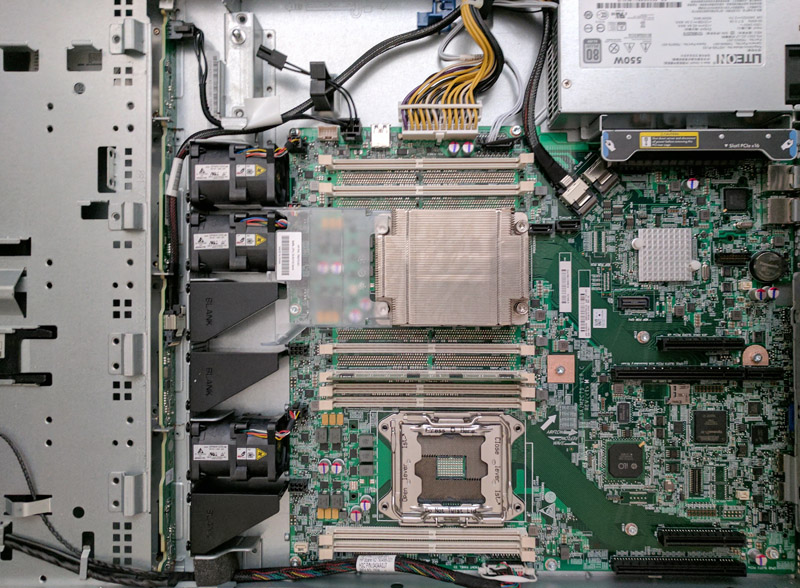
Likewise, you can see that one can fit up to three external facing PCIe add-in cards using risers at the rear of the system. In our test system, only one of these was populated. Our test unit, having only one CPU, was outfitted with only three fan assemblies. This keeps costs down as well as power consumption lower on the lower spec machines.
Despite the fact that this is intended as a low-cost platform, HPE still uses many of the familiar ProLiant Gen9 features. One example of this is that the HPE ProLiant DL60 Gen9 uses HPE’s proprietary latching mechanism unique to HPE.
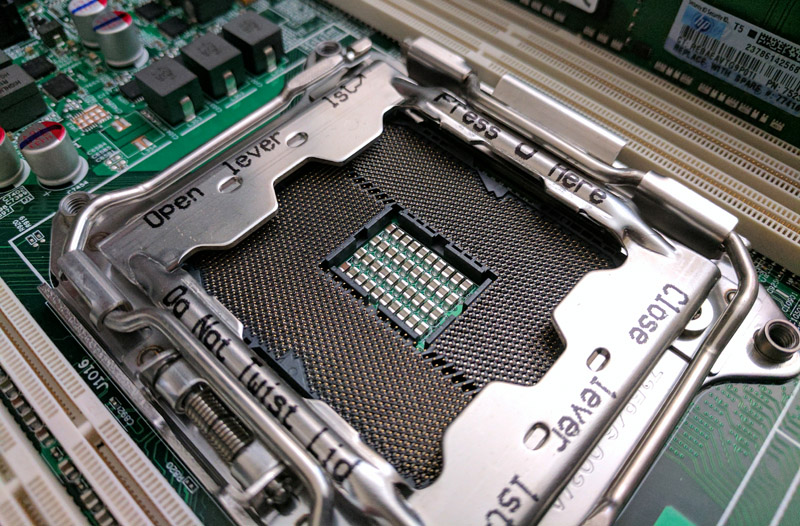
The benefit of such a socket design is that it makes field replacement and upgrades simple with a lower chance of bending a socket pin. The negative is that the socket is only compatible with HPE branded cooling solutions and those from HPE’s partners. Much of the market uses a standard reference heatsink design for Intel Xeon E5-2600 series CPUs (V1 through V4.) If you were previously a customer of other server makers and were hoping to recycle spares with HP, that is unlikely to work. HPE does a lot of engineering even in mechanical design, but you do have to play in their ecosystem.
In terms of rear I/O, the HPE ProLiant DL60 Gen 9 has PCIe risers to add additional devices such as network controllers. The exact configuration is configurable at the time of ordering.
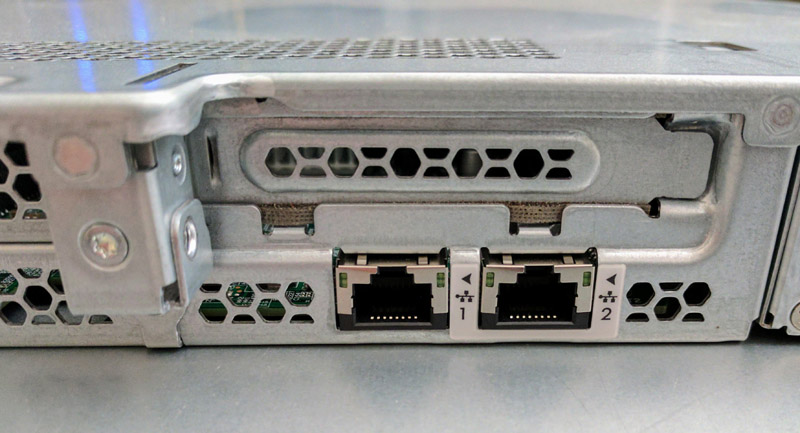
The dual 1GbE NICs show as Intel i350 NICs which are high-quality NICs that are widely used and supported in the software industry.

Aside from the network ports, HPE has rear USB 3.0 ports as well as a VGA port. These are commonly used with external KVM devices such as data center crash carts.
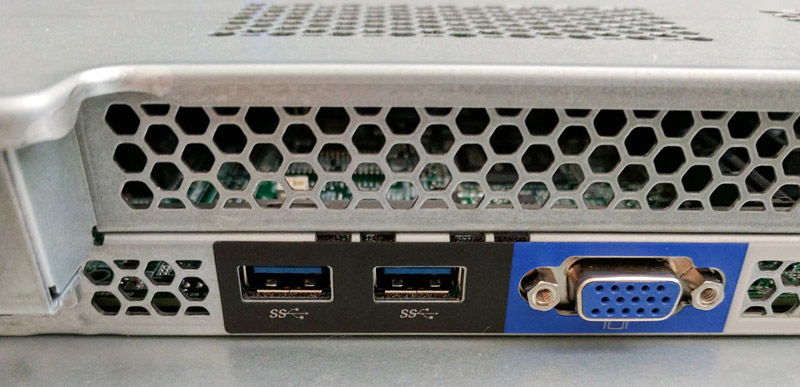
The PSU is a generous 550W unit. Ours was not a redundant hot swap design. In many low-cost data centers, where the DL60 is targeted, there is only one power feed. Using a single PSU actually, increases reliability and will slightly lower power consumption.
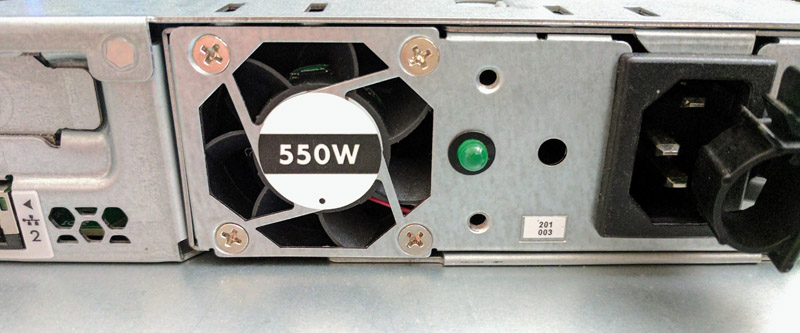
Our test unit exemplifies what may be the lowest cost rackmount HPE Proliant configuration available. The market for such a machine is usually applications that are distributed and IT admins like to run on dedicated hardware such as domain and network services.
HPE ProLiant DL60 Gen9 iLO4 Management
Perhaps the biggest selling point for the HPE ProLiant DL60 Gen9 is not the hardware, rather the iLO4 management. HPE has a field-tested management interface on each machine.
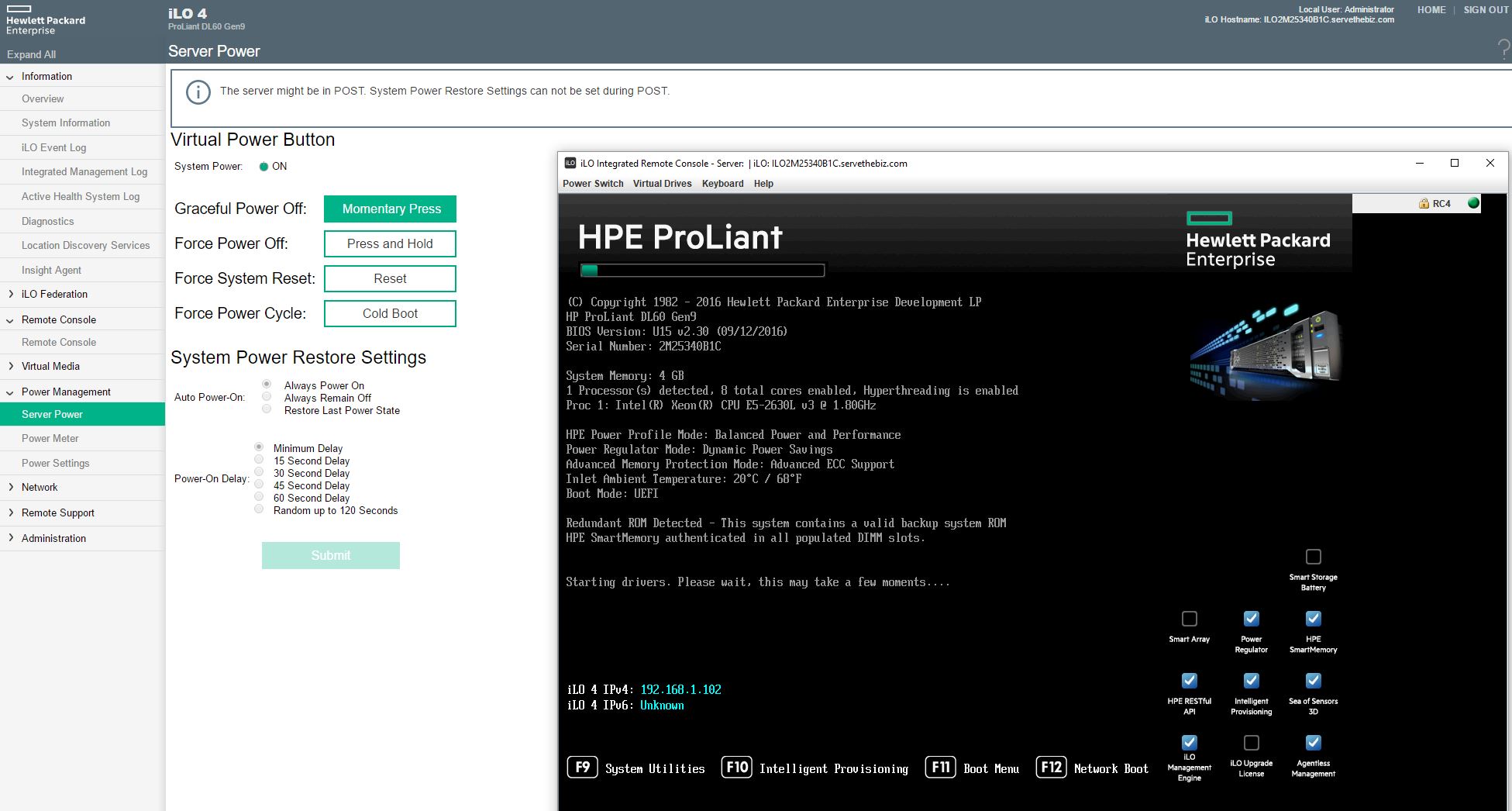
There were common features such as being able to tie authentication into larger directory services, power cycling machines, and iKVM functionality.
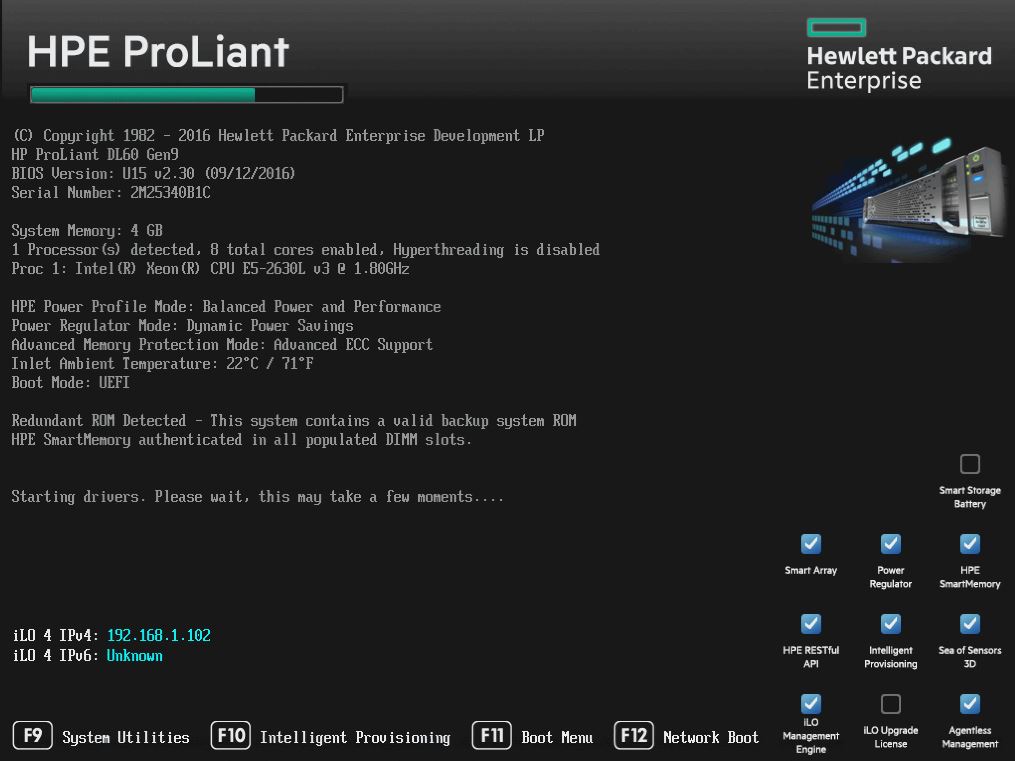
Key here is that the basic iKVM console will not allow one to boot into the OS without an upgraded license. This is similar to vendors such as Dell and Lenovo but unlike others such as QCT and Supermicro who provide fewer features but include them in the server’s purchase price.
The key to iLO management is that one can manage large numbers of machines with supported control plane and automation frameworks. Essentially with the HPE ProLiant DL60, HPE has one of the lowest costs servers it can produce managed by iLO. This allows HPE’s customers to deploy low-cost, low performance, physical servers and still manage them within broader iLO ecosystems.
HPE ProLiant DL60 Gen9 Performance
We ran the HPE ProLiant DL60 Gen9 system through our standard Linux-Bench test suite that we use to profile systems. You can see raw results of that with over 50 data points here.
Since this is not a configuration intended for maximum performance, we are simply going to show a Linux kernel compile benchmark relative rating including a few AWS instances and some single CPU Intel machines:
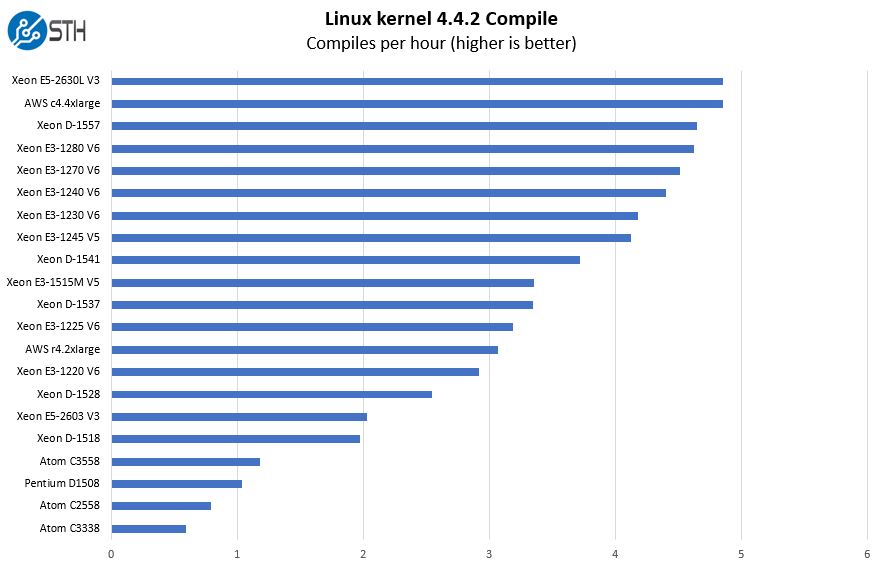
In terms of performance, the Intel Xeon E3-2603 V3 is the lowest-end option available. With that, the server starts around the four core Intel Xeon D performance and scales up from there. Key is that the DL60 Gen9 can only handle up to 105W TDP CPUs. As a result, the maximum performance is limited.
Using the single, non-redundant, non-hot swap PSU, did pay power consumption dividends. We measured power consumption on our Schneider Electric/ APC PDUs for the machine at idle, using a typical 60% CPU load and a heavy compute application (GROMACS):
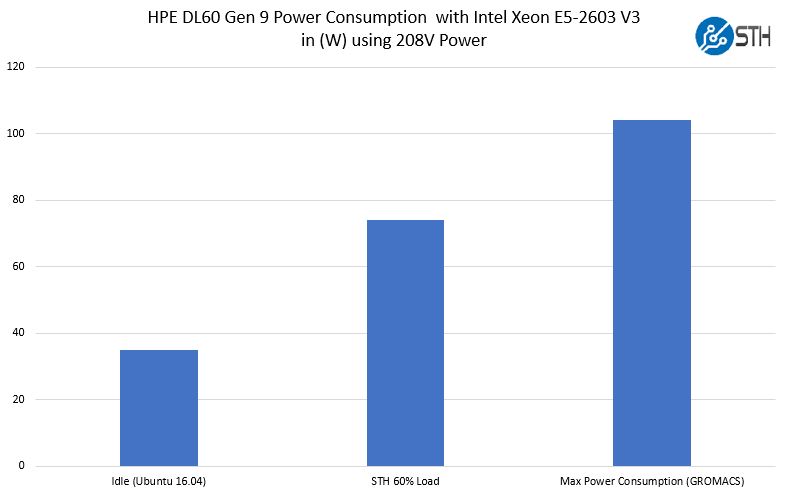
As you can see, HPE did a great job pushing power consumption envelopes down to the levels of the Intel Xeon E3 series of systems. That is a feat itself.
Final Words
Although the HPE ProLiant DL60 Gen9 is marketed at an SMB server, the real value in the stripped down platform is in the engineering and iLO4 management. Given the pricing, iLO is targeted upmarket from those SMB shops who simply need a handful of servers. Likewise, the trend in lightweight applications is to host them in the cloud or on virtualized infrastructure. Still, many IT admins prefer physical machines for certain applications where the HPE ProLiant DL60 Gen9 is likely to be a good fit. The flip side of this equation is that the DL60 is HPE’s bare-bones entry-level product. We can see it being used as a tool to start customer conversations then up-sell to more robust servers (e.g. the HPE ProLiant DL160 Gen9.)
The server was a pleasure to service as HPE has an excellent mechanical design. iLO4 is a step above what the white box players in the server markets have, assuming you upgrade the license. Once installed, the DL60 Gen9 sips power as one would hope.

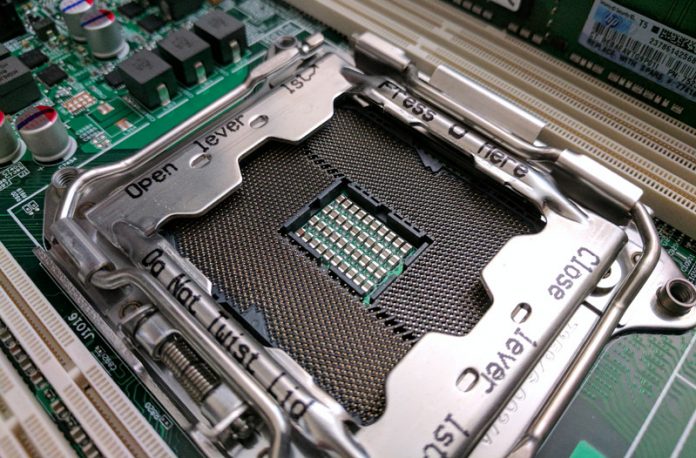



Nice idle power utilisation numbers! Patrick how loud is it @ idle?
This is not actually Broadwell, especially not Broadwell-DE (which I believe are the famous Xeon-D). E5 v3 is Haswell.
That’s what I thought Nils. I was thrown off by the Broadwell-DE part after seeing this server with sockets…